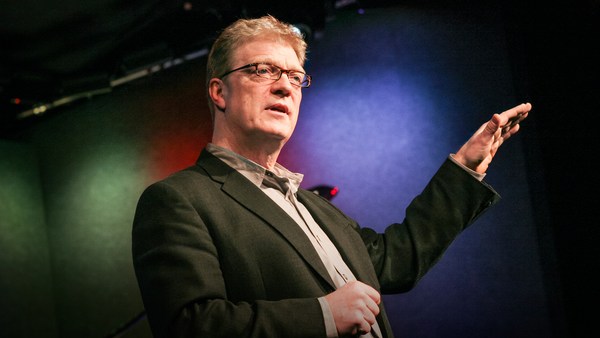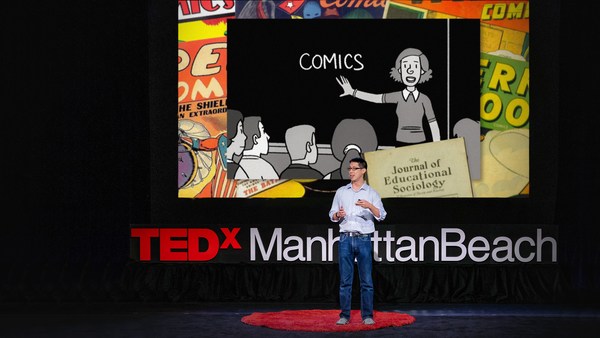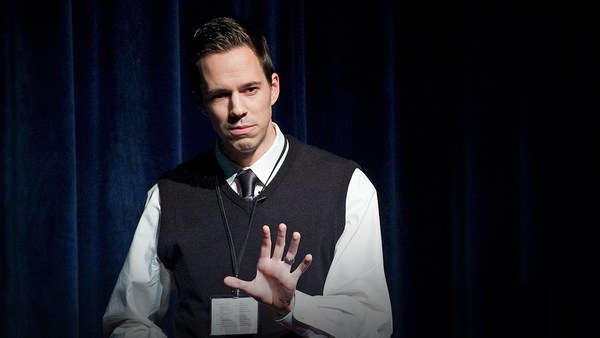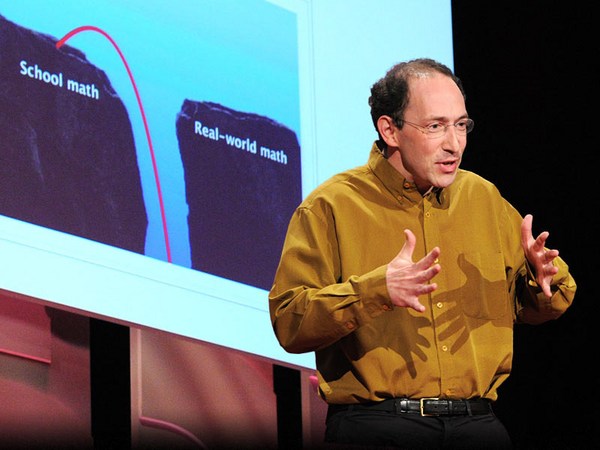A friend of mine told me recently that her six-year-old son had come from school and said he hated math. And this is hard for me to hear because I actually love math. The beauty and power of mathematical thinking have changed my life. But I know that many people lived a very different story. Math can be the best of times or the worst of times, an exhilarating journey of discovery or descent into tedium, frustration, and despair. Mathematical miseducation is so common we can hardly see it. We practically expect math class to be repetition and memorization of disjointed technical facts. And we're not surprised when students aren't motivated, when they leave school disliking math, even committed to avoiding it for the rest of their lives. Without mathematical literacy, their career opportunities shrink. And they become easy prey for credit card companies, payday lenders, the lottery, (Laughter) and anyone, really, who wants to dazzle them with a statistic. Did you know that if you insert a single statistic into an assertion, people are 92 percent more likely to accept it without question? (Laughter) Yeah, I totally made that up. (Laughter) And 92 percent is - it has weight even though it's completely fabricated. And that's how it works. When we're not comfortable with math, we don't question the authority of numbers. But what's happening with mathematical alienation is only half the story. Right now, we're squandering our chance to touch life after life with the beauty and power of mathematical thinking. I led a workshop on this topic recently, and at the end, a woman raised her hand and said that the experience made her feel - and this is a quote - "like a God." (Laughter) That's maybe the best description I've ever heard for what mathematical thinking can feel like, so we should examine what it looks like. A good place to start is with the words of the philosopher and mathematician René Descartes, who famously proclaimed, "I think, therefore I am." But Descartes looked deeper into the nature of thinking. Once he established himself as a thing that thinks, he continued, "What is a thinking thing?" It is the thing that doubts, understands, conceives, that affirms and denies, wills and refuses, that imagines also, and perceives. This is the kind of thinking we need in every math class every day. So, if you are a teacher or a parent or anyone with a stake in education, I offer these five principles to invite thinking into the math we do at home and at school. Principle one: start with a question. The ordinary math class begins with answers and never arrives at a real question. "Here are the steps to multiply. You repeat. Here are the steps to divide. You repeat. We've covered the material. We're moving on." What matters in the model is memorizing the steps. There's no room to doubt or imagine or refuse, so there's no real thinking here. What would it look like if we started with a question? For example, here are the numbers from 1 to 20. Now, there's a question lurking in this picture, hiding in plain sight. What's going on with the colors? Now, intuitively it feels like there's some connection between the numbers and the colors. I mean, maybe it's even possible to extend the coloring to more numbers. At the same time, the meaning of the colors is not clear. It's a real mystery. And so, the question feels authentic and compelling. And like so many authentic mathematical questions, this one has an answer that is both beautiful and profoundly satisfying. And of course, I'm not going to tell you what it is. (Laughter) I don't think of myself as a mean person, but I am willing to deny you what you want. (Laughter) Because I know if I rush to an answer, I would've robbed you of the opportunity to learn. Thinking happens only when we have time to struggle. And that is principle two. It's not uncommon for students to graduate from high school believing that every math problem can be solved in 30 seconds or less, and if they don't know the answer, they're just not a math person. This is a failure of education. We need to teach kids to be tenacious and courageous, to persevere in the face of difficulty. The only way to teach perseverance is to give students time to think and grapple with real problems. I brought this image into a classroom recently, and we took the time to struggle. And the longer we spent, the more the class came alive with thinking. The students made observations. They had questions. Like, "Why do the numbers in that last column always have orange and blue in them?" and "Does it mean anything that the green spots are always going diagonally?" and "What's going on with those little white numbers in the red segments? Is it important that those are always odd numbers?" Struggling with a genuine question, students deepen their curiosity and their powers of observation. They also develop the ability to take a risk. Some students noticed that every even number has orange in it, and they were willing to stake a claim. "Orange must mean even." And then they asked, "Is that right?" (Laughter) This can be a scary place as a teacher. A student comes to you with an original thought. What if you don't know the answer? Well, that is principle three: you are not the answer key. Teachers, students may ask you questions you don't know how to answer. And this can feel like a threat. But you are not the answer key. Students who are inquisitive is a wonderful thing to have in your classroom. And if you can respond by saying, "I don't know. Let's find out," math becomes an adventure. And parents, this goes for you too. When you sit down to do math with your children, you don't have to know all the answers. You can ask your child to explain the math to you or try to figure it out together. Teach them that not knowing is not failure. It's the first step to understanding. So, when this group of students asked me if orange means even, I don't have to tell them the answer. I don't even need to know the answer. I can ask one of them to explain to me why she thinks it's true. Or we can throw the idea out to the class. Because they know the answers won't come from me, they need to convince themselves and argue with each other to determine what's true. And so, one student says, "Look, 2, 4, 6, 8, 10, 12. I checked all of the even numbers. They all have orange in them. What more do you want?" And another student says, "Well, wait a minute, I see what you're saying, but some of those numbers have one orange piece, some have two or three. Like, look at 48. It's got four orange pieces. Are you telling me that 48 is four times as even as 46? There must be more to the story." By refusing to be the answer key, you create space for this kind of mathematical conversation and debate. And this draws everyone in because we love to see people disagree. After all, where else can you see real thinking out loud? Students doubt, affirm, deny, understand. And all you have to do as the teacher is not be the answer key and say "yes" to their ideas. And that is principle four. Now, this one is difficult. What if a student comes to you and says 2 plus 2 equals 12? You've got to correct them, right? And it's true, we want students to understand certain basic facts and how to use them. But saying "yes" is not the same thing as saying "You're right." You can accept ideas, even wrong ideas, into the debate and say "yes" to your students' right to participate in the act of thinking mathematically. To have your idea dismissed out of hand is disempowering. To have it accepted, studied, and disproven is a mark of respect. It's also far more convincing to be shown you're wrong by your peers than told you're wrong by the teacher. But allow me to take this a step further. How do you actually know that 2 plus 2 doesn't equal 12? What would happen if we said "yes" to that idea? I don't know. Let's find out. So, if 2 plus 2 equaled 12, then 2 plus 1 would be one less, so that would be 11. And that would mean that 2 plus 0, which is just 2, would be 10. But if 2 is 10, then 1 would be 9, and 0 would be 8. And I have to admit this looks bad. It looks like we broke mathematics. But I actually understand why this can't be true now.
Just from thinking about it, if we were on a number line, and if I'm at 0, 8 is eight steps that way, and there's no way I could take eight steps and wind up back where I started. Unless ... (Laughter) well, what if it wasn't a number line? What if it was a number circle? Then I could take eight steps and wind back where I started. 8 would be 0. In fact, all of the infinite numbers on the real line would be stacked up in those eight spots. And we're in a new world. And we're just playing here, right? But this is how new math gets invented. Mathematicians have actually been studying number circles for a long time. They've got a fancy name and everything: modular arithmetic. And not only does the math work out, it turns out to be ridiculously useful in fields like cryptography and computer science. It's actually no exaggeration to say that your credit card number is safe online because someone was willing to ask, "What if it was a number circle instead of a number line?" So, yes, we need to teach students that 2 plus 2 equals 4. But also we need to say "yes" to their ideas and their questions and model the courage we want them to have. It takes courage to say, "What if 2 plus 2 equals 12?" and actually explore the consequences. It takes courage to say, "What if the angles in a triangle didn't add up to 180 degrees?" or "What if there were a square root of negative 1?" or "What if there were different sizes of infinity?" But that courage and those questions led to some of the greatest breakthroughs in history. All it takes is willingness to play. And that is principle five. Mathematics is not about following rules. It's about playing and exploring and fighting and looking for clues and sometimes breaking things. Einstein called play the highest form of research. And a math teacher who lets their students play with math gives them the gift of ownership. Playing with math can feel like running through the woods when you were a kid. And even if you were on a path, it felt like it all belonged to you. Parents, if you want to know how to nurture the mathematical instincts of your children, play is the answer. What books are to reading, play is to mathematics. And a home filled with blocks and puzzles and games and play is a home where mathematical thinking can flourish. I believe we have the power to help mathematical thinking flourish everywhere. We can't afford to misuse math to create passive rule-followers. Math has the potential to be our greatest asset in teaching the next generation to meet the future with courage, curiosity, and creativity. And if all students get a chance to experience the beauty and power of authentic mathematical thinking, maybe it won't sound so strange when they say, "Math? I actually love math." Thank you. (Applause)





